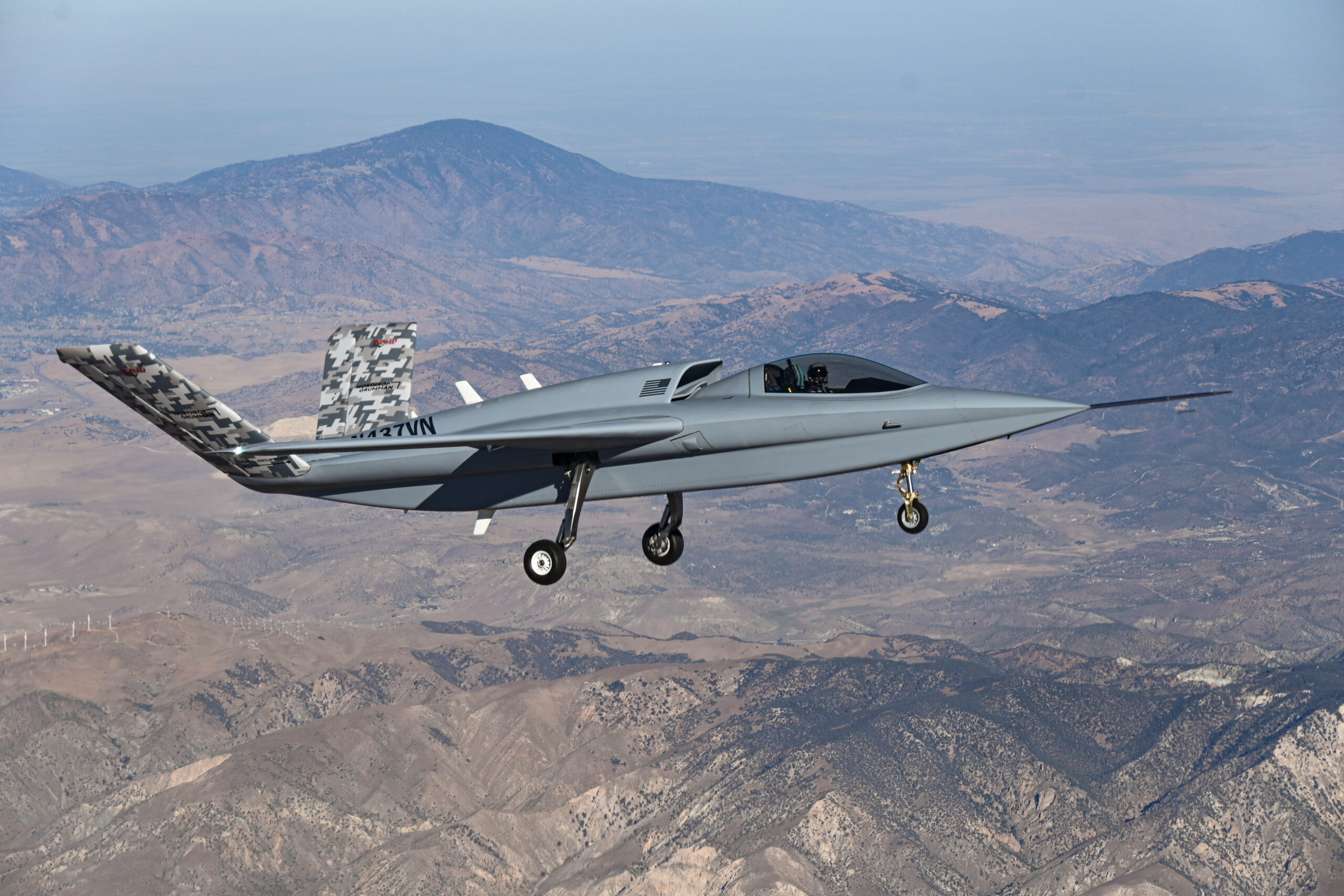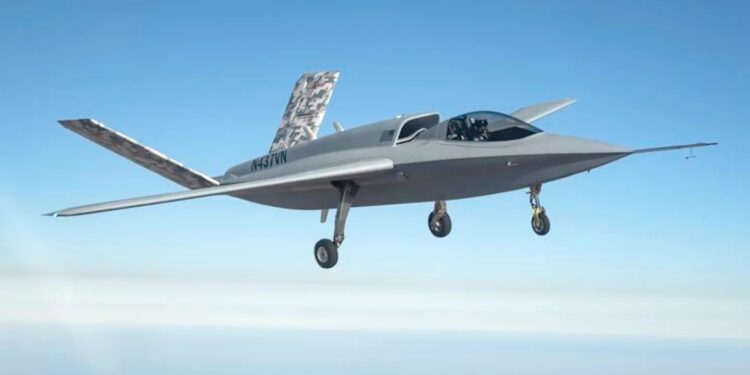NORTHROP GRUMMAN

In partnership with Northop Grumman, Scaled Composites has announced the first flight of its latest aircraft, the Model 437 Vanguard. The design has been in development as a “loyal wingman” advanced air combat drone since at least 2021, but this early example curiously surfaced earlier this month with a cockpit.
The Model 437 began as a concept design, based on the Model 401, exploring a low-cost, attritable, multi-mission aircraft. The Model 437 Vanguard is a manned variant of the original concept, powered by a single Pratt & Whitney 535 engine with approximately 3,400 pounds of thrust.
The aircraft has a 40-foot wingspan and 40-foot length, with a gross takeoff weight of 10,000 pounds. Upon completion of the envelope expansion, the M437 Vanguard will have a range of approximately 3,000 nautical miles and an endurance of 6 hours. The aircraft can carry up to 2,000 pounds of payload in multiple locations, including an internal weapons bay sized to accommodate two AIM-120s air-to-air missiles. Scaled Composites leveraged its extensive experience in rapid design, manufacturing and testing of experimental aircraft to develop the Model 437 Vanguard. This included an entirely new aircraft design, aerodynamic and structural analysis, fuselage and empennage fabrication, aircraft assembly, systems integration and ground and flight testing.
Test pilot Brian Maisler said, “Today’s first flight was in a great jet with a great crew – this is the best part of my job. Thank you all for your two years of hard work, culminating in making this a fun and uneventful day.” Northrop Grumman defined, developed, built and verified removable wing assemblies using advanced digital tools and processes as part of its Digital Pathfinder effort.
By leveraging real-world experience gained from programs including the B-21 Raider, the company continues to evolve its collaborative digital ecosystem, which connects the company, customers and supplier partners through the design, development and test phases across a variety of current and future programs, Northrop Grumman said.
The digital ecosystem reduced engineering rework and redesign to less than one percent, compared to the 15-20 percent experienced using traditional methods. The demonstration also leveraged high-fidelity models combined with rigorous, proven model validation schemes to reduce requirements for ground and flight testing. Looking ahead, these models show the potential to significantly reduce the workload required to determine airworthiness, offering further opportunities for cost and schedule savings, the manufacturer concluded.
Vivaero

Comments
Post a Comment